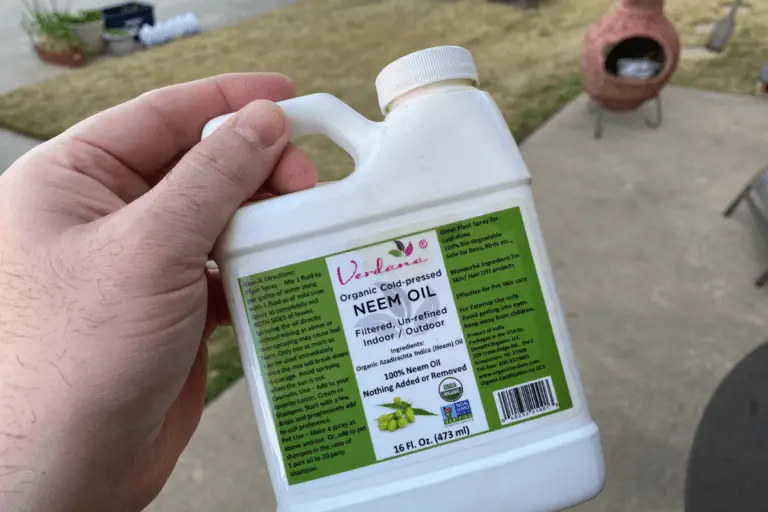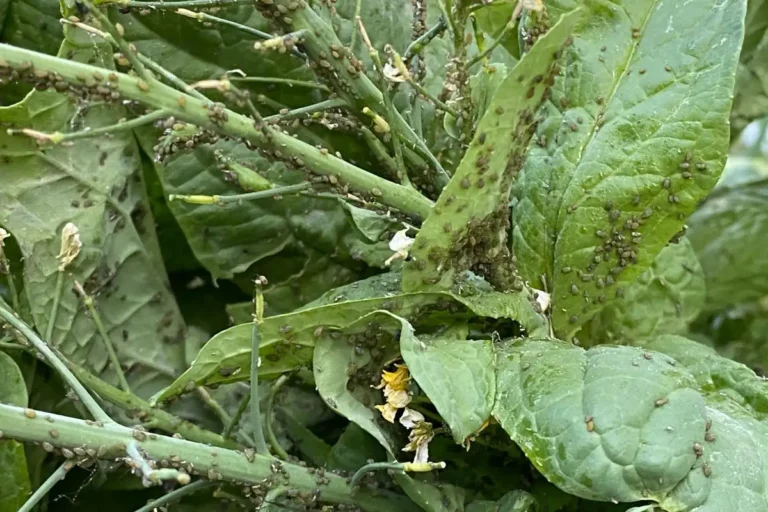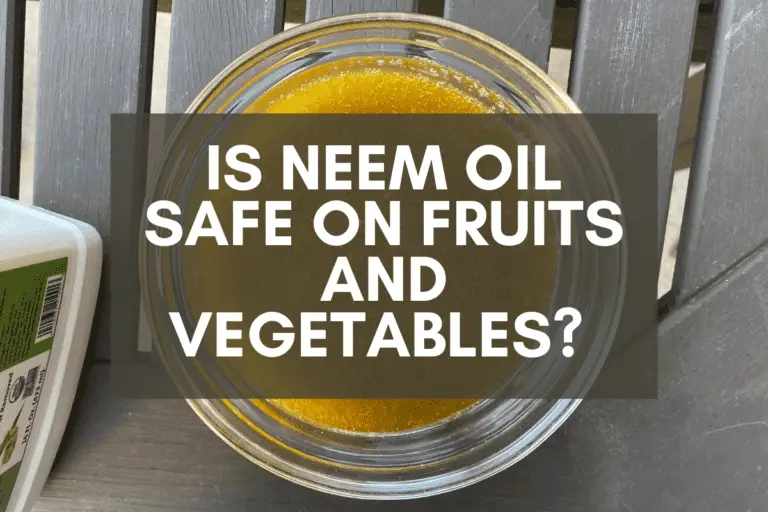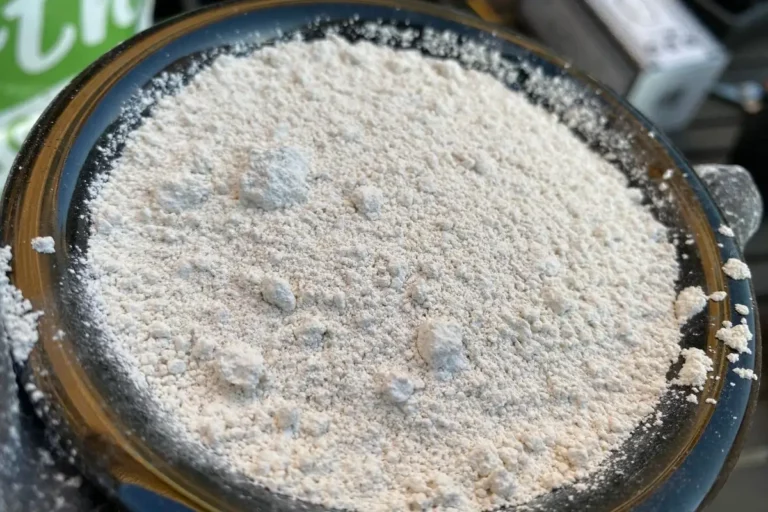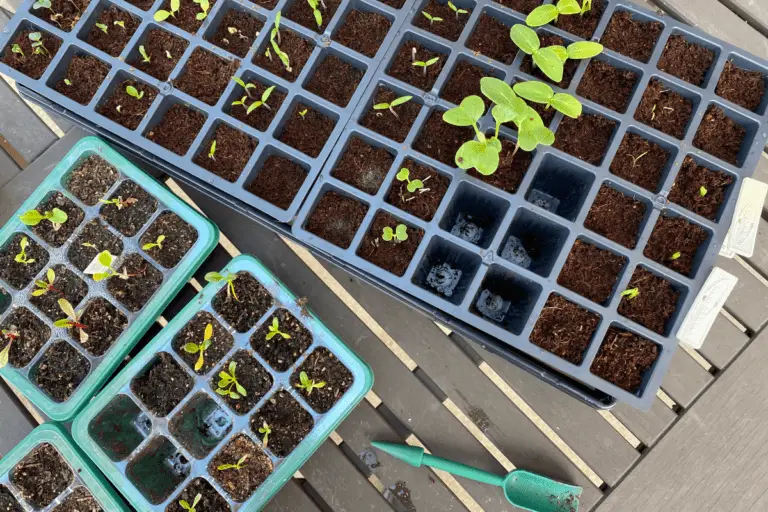How Long Does Diatomaceous Earth Protect Your Plants?
Over the past 20 years or so, diatomaceous earth (DE) has gained some significant traction here in the United States as a natural, effective pesticide that works against a wide variety of harmful garden pests, creating a barrier of microscopic, razor-sharp particles that kill insects on contact without harming plants.
I didn’t start using it until a few years ago, and I wish I would have learned more about it sooner!
But here’s a question that came to mind once I started applying it to my bug-infested plants: Once you start spreading DE in your garden, how long will it protect your plants? Will it continue working for days, or even weeks, after you apply it?
In typical weather conditions without rainfall or heavy dew, diatomaceous earth will protect plants effectively for at least one week. After this period, its effectiveness diminishes as it’s exposed to windy breezes and light dews, so DE should be reapplied weekly to bug-infested plants.
These are general guidelines only since conditions will vary from region to region. But I’d like to share some of my personal experiences with DE and recommendations for how to use it effectively, so here’s what I’ll cover below:
- Detailed insights into how diatomaceous earth works and how long DE will stay active on your plants.
- Information on whether DE continues to work after drying out after a rainfall or a garden watering.
- Guidance on how to apply DE and how often you should reapply it to maintain protection.
- Some general insights into the overall lifespan and shelf life of DE and how best to store it on your property.
By understanding these important points, you’ll be able to utilize DE to its fullest potential, providing your plants with lasting protection against damaging pests and intervening when bugs threaten to destroy your garden.
With the right application and maintenance, DE serves as an excellent addition to any gardener’s pest management strategy, so let’s take a look at when, how, and how often to apply it!
By the way, if you want to use DE the way I use it in my backyard garden, you’ll want to purchase these products (or something similar) if you don’t already own them:
How Long Will Diatomaceous Earth Stay Active and Effective?
Diatomaceous earth is a sedimentary mineral derived from the fossilized remains of tiny aquatic microalgae known as diatoms.
These minute creatures have existed for eons and have contributed significantly to Earth’s geological history. They live, they die, then they turn into sediment on the bottoms of lakes, rivers, and other waterways.
What makes diatoms so fascinating—and what makes DE such a valuable tool for organic gardening—is their cellular structures. Unlike most organisms on this planet, diatoms have a siliceous cellular makeup.
That means that their cell walls are made up of silica. (How weird is that!)
In other words, these little creatures will turn into vast silica deposits once they’ve died and fossilized. And this is what gives diatomaceous earth its lasting power as a natural insecticide.
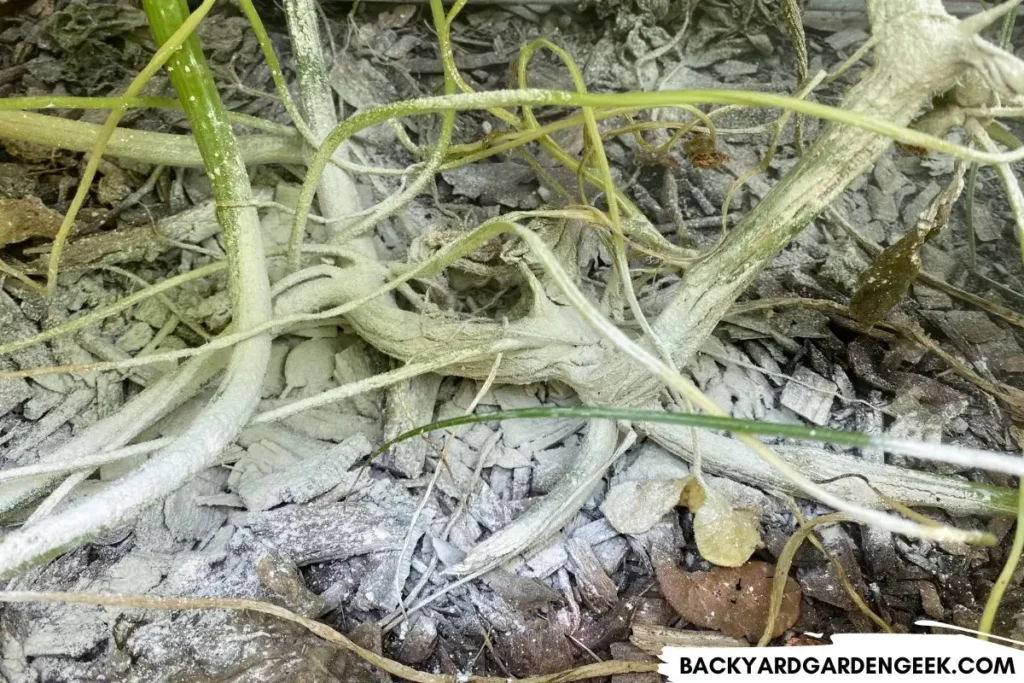
DE works by presenting a minefield of sharp, jagged edges to small pests. When insects get sprayed with DE or crawl across it, the particles’ sharp edges cut through their protective exoskeletons, causing dehydration and eventual death.
While this may sound dangerous, DE is entirely harmless to humans and our furry friends—and to basically all larger organisms (mammals, birds, reptiles, amphibians, and fish)—making it a safe alternative to chemical pesticides.
But DE has one area where it’s weak in terms of its insect-fighting abilities: moisture.
DE is highly absorbent, which means it’ll suck up any available moisture. This is great when it comes into contact with garden pests since it’ll absorb any available water, oils, or fats.
But when DE comes in contact with water from rainfall, sprinklers, or heavy dew, it clumps together, losing its effectiveness as a bug deterrent.
Rainfall or watering in particular can even cause DE runoff, washing it off the plants and reducing its overall effectiveness.
Just remember that DE is a mineral, so once it dries out, it’ll be effective once more since water won’t change its physical makeup in any way. But it must return to its previous powdery state to be ready to harm any bugs that crawl across it.
In addition, exposure to other elements—such as wind, light dews, and even high humidity—will minimize its effectiveness over time. Wind will displace DE particles and dews and high humidity can keep DE from drying out entirely, reducing its jaggedness and hence its capacity to harm pests.
As a general rule, I’ve found that reapplying DE once a week, especially on visible infestations, maximizes its effectiveness.

I particularly love DE when it comes to dealing with stubborn bugs that resist more conventional treatments, such as soapy water and neem oil sprays.
Here’s a good example: A while back, I had a severe infestation of flea beetles on my tomato plants. These beetles are notoriously hard to get rid of once they’ve established themselves, and they were ravaging my plants.
Soapy water and neem oil sprays weren’t doing much of anything, so in desperation, I coated my tomato plants in DE, a method I don’t usually recommend because it can temporarily stunt their development.
To my relief, this DE barrier halted the beetle infestation in its tracks. The DE didn’t harm my plants either.
I washed off the DE a week later, and although my plants took a few weeks to recover, they ended up producing loads of cherry tomatoes later in the season.
The takeaway here? If it’s a choice between coating your plants in DE and losing them to an infestation, go with DE.
By being mindful of when and how you use it, DE can effectively protect your plants, so let’s look at what happens when it gets wet and dries out again and what you can do to make sure you’re applying it in effective ways.
Does Diatomaceous Earth Work After Drying Out?
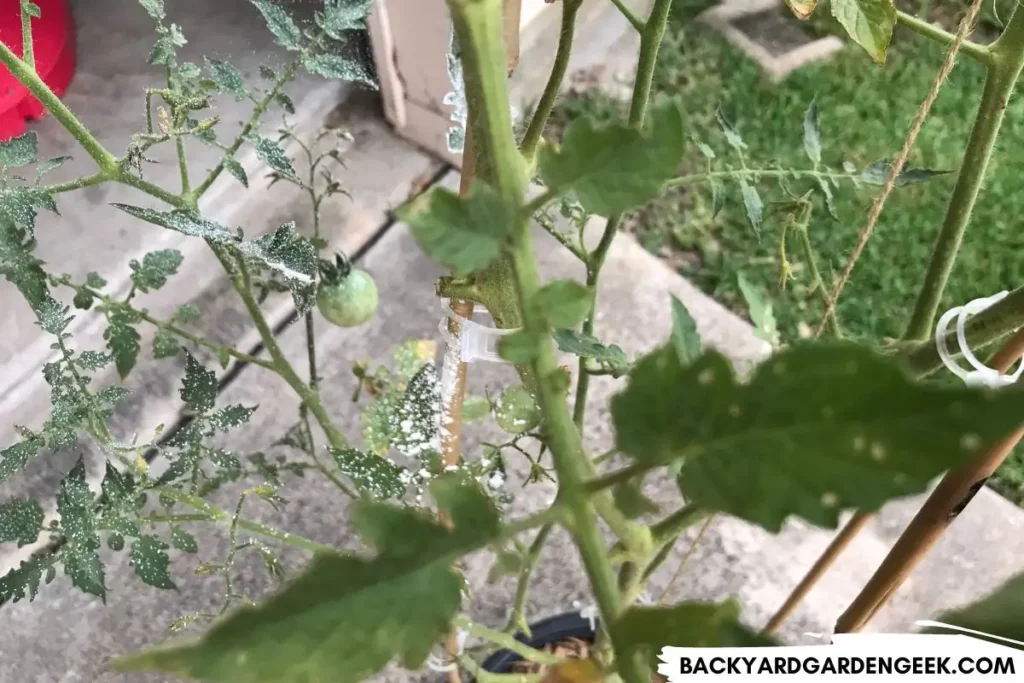
If you’ve got a garden, watering is essential. However, when it comes to using diatomaceous earth as a pest deterrent, water can complicate matters.
Understanding the interplay between DE and water is important for maximizing the effectiveness of this natural pesticide.
Here’s what I mean: DE is only potent when it’s in its powdery, dry state.
When DE gets wet—whether from rain, water from a hose, or heavy dew—it loses its powdery consistency and becomes compact and clumpy. In this state, DE can no longer slice into insect exoskeletons.
The moisture-absorbing DE particles become saturated, their sharp edges now obscured and ineffective. Whenever DE is wet, it won’t protect your plants against pests.
But does this mean that DE is permanently ineffective once it gets wet? Fortunately for us, the answer is no.
When your wet DE dries out, it’ll mostly return to its previous powdery state, reequipping itself to harm pests that come across it. I say “mostly,” though, because water inevitably causes problems even after DE has dried out.
As DE particles absorb water, they’re forced into closer proximity with each other, which causes clumping. This clumping temporarily reduces the jaggedness of individual DE particles.
Moreover, the process of wetting and drying causes runoff, displacing DE from the plants and carrying it into the soil. This means that when things dry out, the remaining DE on the plants will still be effective against pests, but the overall coverage area (and the protection it would have afforded your plants) will be significantly reduced.
In this situation, you’d need to reapply DE to restore maximum effectiveness.
I once worried about DE runoff mixing with my soil, but this is no cause for concern. As I’ve since learned, DE is a harmless addition to soil. In fact, some people use it as a soil amendment to keep soil from compacting or to improve water retention.
You might also have concerns about DE potentially harming earthworms. However, as far as I’ve seen, there’s no scientific evidence to suggest that DE adversely affects earthworms. They don’t like it—and they’ll expel it from their bodies rather quickly after ingesting it—but it doesn’t kill them either.

Now that you know more about water’s impact on diatomaceous earth, here are a few suggestions for applying it effectively in your garden:
| Buy “Food-Grade” DE | I really like Harris diatomaceous earth, so if you don’t already own some DE, get your hands on a bag! Only use “food-grade” since that’s the only kind that’s safe for gardening. |
| Purchase a Bulb Duster | You can spread DE in different ways, but the best way is to use a high-quality bulb duster like the kind sold by Dr. Killigan’s. These are even better than the plastic dusters that come in many DE bags. |
| Check Your Forecast | You certainly don’t want to apply DE if there’s any rain in the forecast. Check the weather and make sure you’ve got sunny skies for the foreseeable future. |
| Spot-Check for Beneficial Bugs | DE will kill beneficial bugs as easily as it kills garden pests, so be sure to look at your plants and make sure you’re not unwittingly spreading it on areas that are popular with bees and butterflies, ladybugs, lacewings, or other helpful insects. |
| Put on Gloves and a Mask | DE is non-toxic, but you don’t want to get it in your eyes, nose, or mouth. Be sure to put on a mask and gloves, especially on windy days. I recommend goggles as well if there’s a slight breeze outside. |
| Apply to Infested Areas | Please don’t coat your entire garden in DE. Look at the areas where pests are present, then use your bulb duster to spray DE only on those areas. |
| Reapply When Necessary | Even if it doesn’t rain, your DE will lose its effectiveness over time, so I recommend reapplying DE to infested areas once a week until you can no longer see any signs of infestation. |
| Use Other Methods As Needed | You might need a multi-prong strategy for dealing with certain bugs in your garden: such as aphids, armyworms, caterpillars, cucumber beetles, or spider mites. I recommend soapy water sprays and neem oil. Just be sure to use these sprays first, then let things dry out before you apply any DE to your plants. |
Want to learn more about killing bad bugs in and around your garden? You might find more helpful information if you take a look at these related articles:
- 12 Reasons Why Aphids Keep Coming Back + 3 Simple Fixes
- 21 Plants That Aphids Love to Attack + How to Stop Them
- Are Spider Mites Spiders? How to Identify These Garden Pests
- Can Plants Recover from Spider Mites? What You Need to Know
- What Bugs Does Neem Oil Repel and Get Rid Of?
- Why Do Insects Hate Neem Oil? 12 Secrets to Its Success
How Often Should I Reapply Diatomaceous Earth?
Even when applied properly, diatomaceous earth’s effectiveness wanes with time.
Normal exposure to the elements—wind, heat, sunlight, and humidity—gradually compacts it and reduces its potency.
In typical weather conditions, without interference from rain or heavy dew, you should plan to reapply DE at least once a week to infested areas to ensure your plants remain protected.
Before you begin the reapplication process, it’s smart to check your local weather forecast. You’re looking for a dry spell—applying DE just before a rainstorm will waste your time and resources
The goal is to get the DE onto your plants and let it sit there for several days before any rain can cause runoff.
After application, you’ll need to keep a watchful eye on the weather. If it rains, or if you water your plants, you’ll see clumping and runoff, reducing the effectiveness of your DE.
Applying DE is not a one-time fix but a continual process that requires attention and reapplication.
By following these steps and maintaining a regular application schedule, you’ll ensure that pests never get established in your garden.
How Long Will Diatomaceous Earth Last?
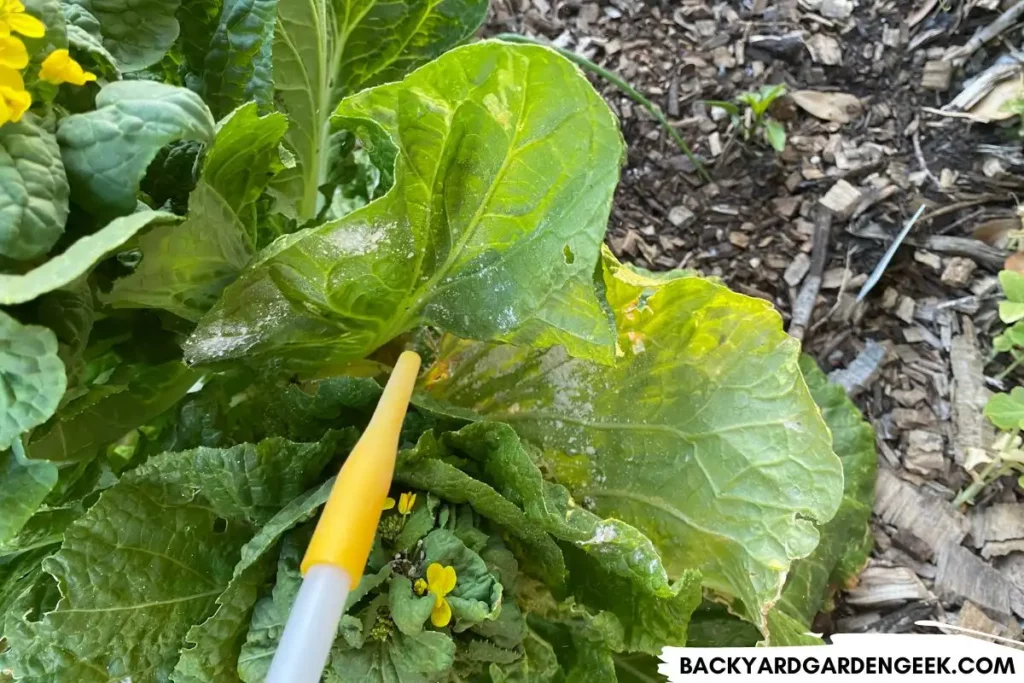
As I noted earlier, diatomaceous earth, as it exists today, is the product of countless ancient diatoms, resting as sediment at the bottom of rivers, lakes, and oceans. Given its eons-long life span, it’s safe to say that the diatomaceous earth you purchase won’t expire or go bad in your lifetime—or the next several.
Unlike chemically-derived pesticides, DE derives its effectiveness not from chemical reactions but from physical mechanisms. This difference is vital in understanding why DE doesn’t degrade or lose potency over time.
It’s an incredibly stable material, not prone to change, breakdown, or decomposition.
But there’s one crucial thing to bear in mind. While DE itself is ageless, its effectiveness can be diminished if improperly stored.
The number one enemy of your DE’s potency is moisture since wet DE clumps together, losing its ability to slice and dehydrate insects’ bodies.
With the right storage, your bag of diatomaceous earth has the potential to outlast you!
So there’s no need to worry about your DE expiring or going bad. Invest in a bag, and your DE will last until you use it all up.
Be ready to apply and reapply as necessary, and your plants will thank you for it!
Additional Information
If you’d like to read more about diatomaceous earth, take a look at these related articles that I’ve written:

